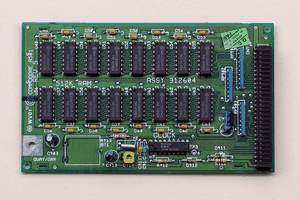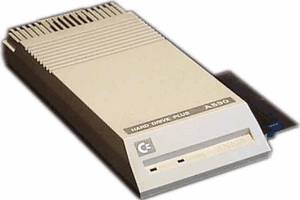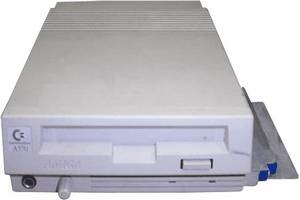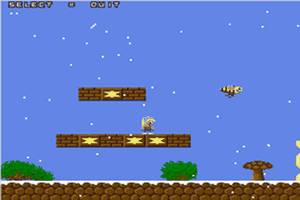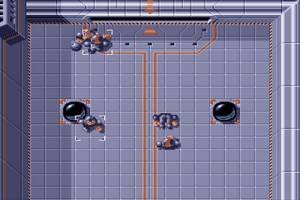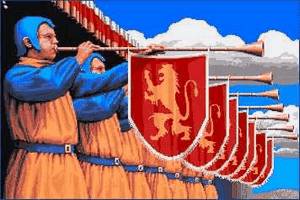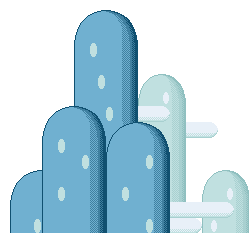| 50 Hz PAL and 60 Hz NTSC analogue RGB video output, provided on an Amiga-specific video connector. This could also be genlocked to an external video signal. An RF adapter was bundled with the machine to provide output on regular televisions. |
| Stereo phono connectors for audio. |
| A standard RS-232 serial port. |
| A parallel port. |
| A floppy drive port, for daisy-chaining up to 3 extra floppy disk drives. |
| Two Atari DE9 sockets for joysticks or mice. |
| Expansion ports were limited to a side expansion port and a trapdoor expansion on the underside of the machine. The casing could also be opened up (voiding the warranty), all chips were socketed rather than surface-mounted, so they could be replaced by hand. |
| The CPU could be upgraded to a 68010 directly or to a 68020, 68030 or 68040 via the side expansion slot. |
| The Chip RAM could be upgraded to 1 Mb directly on the motherboard, provided a Fat Agnus chip was also installed to support it. |
| Likewise, all the custom chips could be upgraded to the ECS chipset. |
| 512 Kb of "Slow RAM" or "Trapdoor RAM" could be added via the trapdoor expansion. Such upgrades usually also included a battery-backed clock. |
| Up to 8 Mb of "Fast RAM" could be added via the side expansion slot. |
| Hard drive and other peripherals could be added via the side expansion slot. |
| Several companies provided combined CPU, memory and hard drive upgrades, or provided chainable expansions, as there was only one side expansion slot. |
| Expansions were configured automatically by AutoConfig software, so multiple pieces of hardware did not conflict with each other. |


